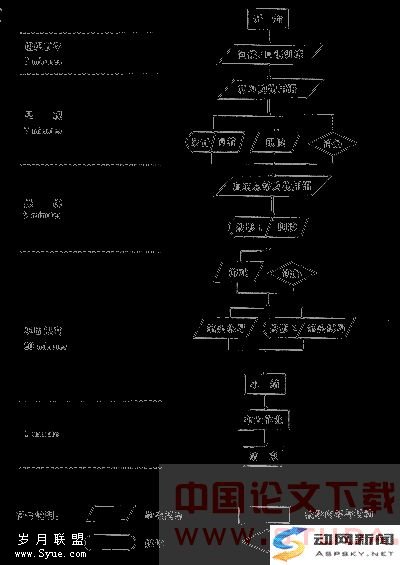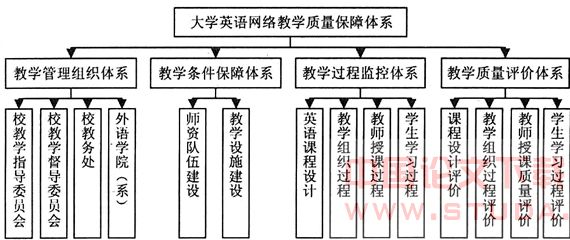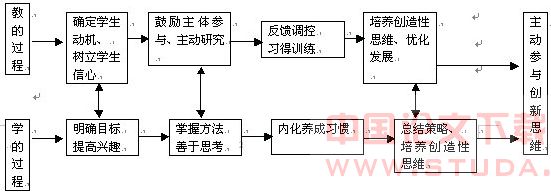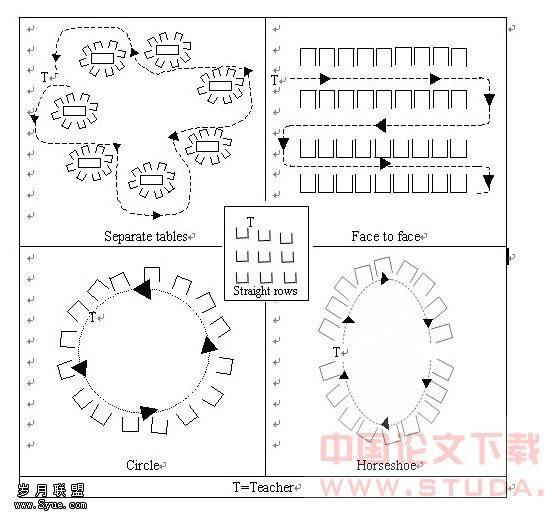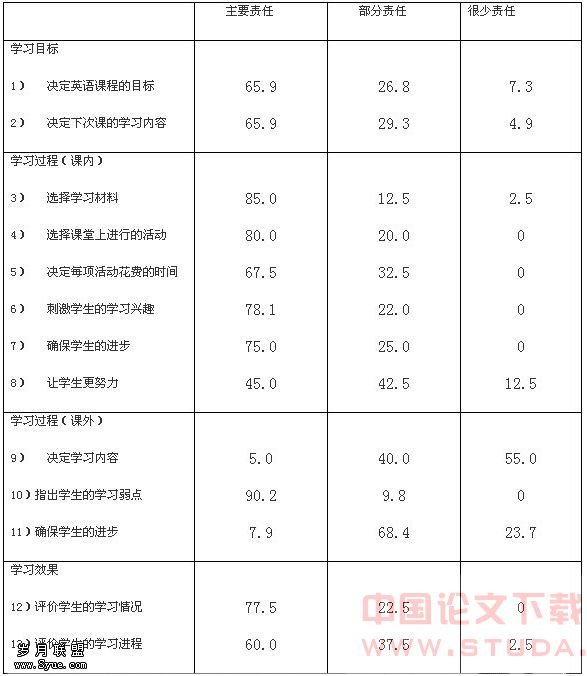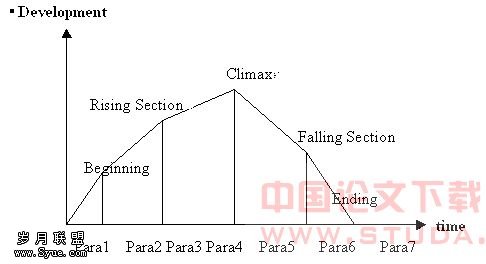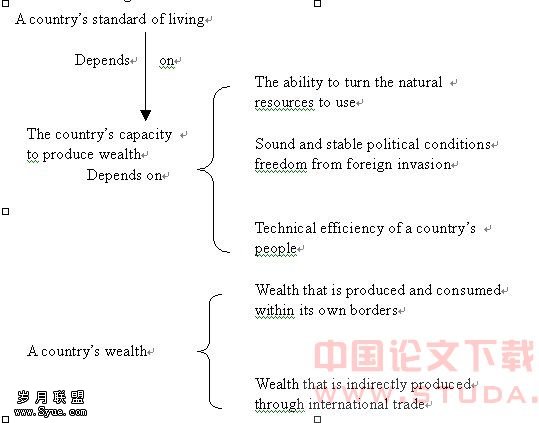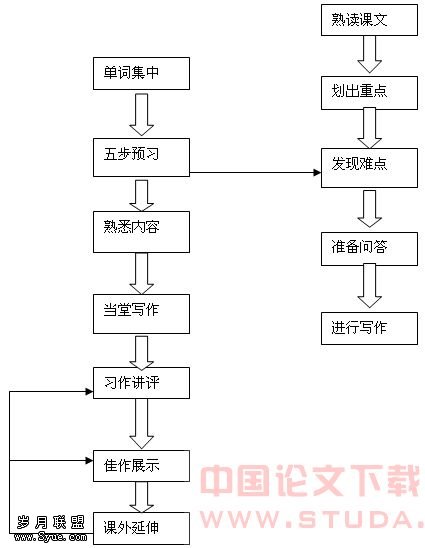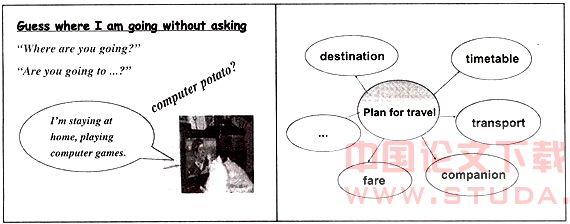英汉词汇文化对比及对英语教学的启示
[Abstract] Language is closely related with culture. One kind of language is influenced by its national culture and represents for its special cultural connotations. This article points out that vocabulary, as one of the three elements of a language, is the most active factor in language learning, which is obviously seen if there appear some changes in culture and language. The significance of studying the cultural connotations of vocabulary is realized. The connotations belong to one aspect of the meanings of vocabulary, and the meanings are divided into seven styles. Besides the conceptual meaning, the rest of other meanings pertain to the connotations. From the connotations, the article analyzes the three corresponding relationships between English and Chinese vocabulary that show the cultural connotations: complete parallelism, incomplete parallelism and no parallelism and gives some examples to demonstrate them. While in the English teaching nowadays, the cultural connotations of vocabulary are often ignored by many English educators, which leads to much danger. Many problems always occur so that students’ interests will be lowered and that students do not have scientific methods of learning, or have bad competence of using language. In this way, the article gives some enlightenment of English teaching, including the constitution of syllabus, the choosing and composing of the teaching material, teaching activities in-class and activities after-class. Therefore, language can be used freely when integrating the cultural connotations of English and Chinese vocabulary with English teaching.
[Key Words] English and Chinese vocabulary; cultural connotation; contrast; teaching
[摘 要] 语言与文化密不可分。一种语言会在一定程度上受本民族文化的影响,反映其独特的文化内涵。词汇作为语意的三要素之一,是语言最活跃的环节,文化与语言的任何一点变化在词汇这一环节上都是显而易见的,从而明确了研究词汇文化内涵的意义。词汇文化内涵是属于词汇意义中的其中一部分,除了概念意义外其余的意义均属于内涵这一方面。就这个词汇的文化内涵意义,文章简单分析了体现英汉语词汇文化内涵的三种对应关系:完全对应型、不完全对应型及完全不对应型,并给出了一些词汇实例证明这三种关系。由于这些对应关系所反映的英汉语词汇的文化内涵常常被许多工作者所忽视,以至于在现今的英语教学中产生了一定的危害。普遍存在着学生学习兴趣不高,没有的学习方法及英语学习能力差等弊病。这些给我们的英语教学带来了极大的启发,本文分别从教学大纲、教材的选编、课堂教学活动、课后活动这些方面导入英汉语词汇的文化因素,能帮助学生更好地运用语言,把英汉语词汇的文化内涵与教学真正结合起来。
[关键词] 中英词汇;文化内涵;对比;教学
1.Introduction
Language is related closely with culture. Language is the carrier and container of culture. English is part of English culture and the Chinese language is part of Chinese culture. Human experience and life style are described and stored in language. Customs, habits and behavioural patterns can be described and analyzed in language. Even the visual arts like painting, sculpture, movie and dance and the auditory arts such as music and singing can be described and evaluated in language. To be sure, culture can exist in the form of materials.[1]
As a mirror of culture language is strongly influenced and shaped by culture. [2] Familial relation is very important to the Chinese people, so there are many kinship terms in Chinese. For example:
(1) 叔侄--- uncle and nephew (2) 爷孙--- grandfather and grandson
(3) 婆媳--- grandmother and wife (4) 夫妻--- husband and wife
Therefore if you want to learn and master one kind of language, learners should know the cultural background of the country that the language belongs to. If a learner just pays attention to the language itself but ignores the cultural background that the language represents, he will not master it correctly and use it properly.
Meanwhile language also reflects its influence on culture. “White” means “immaculate and sinless” in English, so westerners call “the auspicious day of marrying” as “white day”. Then in China, “white” is not good for lovers who will marry.
Vocabulary is the basic factor of all language and a key element in language learning. A well-known English linguist D.A.Wilkins said: “No language, people can’t express many things; while no vocabulary, people can express none.”[3] Vocabulary is the most active and flexible component of language. By this token, vocabulary can be reflected by culture. In other words, the discrepancies between different cultures can also be reflected by vocabulary.
This article is trying to focus on the cultural connotations of English and Chinese vocabulary and give some suggestions to English teaching.
2. The classification of vocabulary meaning
English linguist Geoffrey Leach divides the semantics into seven styles: 1) Conceptual Meaning; 2) Connotative Meaning; 3) Stylistic Meaning; 4) Affective Meaning; 5) Reflected Meaning; 6) Collocative Meaning; 7) Thematic Meaning [4] Conceptual meaning is the basic meaning, the central factor in linguistic communication, which is the word meaning used to express an object in the real world or a concept in our mind. It is also the denotative meaning of words. Then the rest of other meanings pertain to the connotation, which is the associative matters and feelings when using the words. The cultural connotation of vocabulary refers to the meaning of the culture of one nation that words imply, or the meanings except for the conceptual meaning of one word or a phrase.
So in the following paper, the meanings except the conceptual meaning of vocabulary will be discussed.
3. Analysis of the corresponding relationships of the cultural connotations of vocabulary between Chinese and English
Different nationalities have their own thinking ways, social background, customs, habits, ethic moralities and conventional taboo words, which lead to various kinds of national culture. The meanings of vocabulary must be stigmatized as a brand of national culture. Through analyzing and contrasting, the three kinds of corresponding relationships of the cultural connotations between English and Chinese vocabulary are as follows:
3.1 Complete corresponding relationship
It means “Two kinds of languages have same literal meanings and similar cultural connotations on the whole.” [5] It consists of 3 kinds:
3.1.1 Fixed theory words
There are some words that have been established by using rules to express the same theory or the same object. For examples:
(1) capitalism---资本主义 (2) socialism---社会主义
(3) Marxism---马克思主义 (4) man-made secondary planet---人造卫星
(5) science---科学 (6) society---社会
3.1.2 Body words
There are some words that are used to describe our human body
(1) “heart” mean “hollow muscular organ that pumps blood through the body”[6]. It has the same literal meaning with “心” in Chinese. They also mean a person’s thoughts and emotions, esp of love, ability to feel emotion.
“heart of stone” means “铁石心肠”, “sweet heart” means “爱人”, “from one’s heart” means “衷心” in Chinese, “to have one’s heart in one’s mouth” means “提心吊胆”, “heart to heart” means “心对心”.
(2)“die” and “死” have the same literal meaning and connotative meaning. Chinese and westerners both use other euphemistic words to express the meaning of “death” instead of using the two words directly. “pass away”--- “去世”, “go to heaven”--- “升天”, “go to west”--- “上西天”, “pay one’s debt to nature”--- “返归”, “meet one’s death”--- “丧命”, “end up”--- “死”
3.1.3 Metaphor words
There are some words that have the same connotations to make the metaphor. It can be clearly seen in the examples below:
(1) eat like a wolf--- eat quickly and a large sum of food while hungry 狼吞虎咽 (2) pure as the driven snow--- very white 洁白如雪
(3) hard as iron--- very firm 坚如钢铁
(4) light as feather--- very light 轻如鸿毛
(5) foxy--- as cunning as fox 狡猾的
In conclusion, because of the complete parallelism relationship between Chinese and English words, these words are understood well by students. So these words are easy to master for students, and teachers should take advantage of the relationship of complete parallelism. When meeting these words, teachers should ask students to find out the relating Chinese or English meaning so that students could remember them quickly and correctly. For example:
(1) How to teach “as busy as a bee [7]”? Let students imagine “How do bees work? They keep working busily without stop.” So we could understand “as busy as a bee” as “忙得不可开交”.
(2) eagle-eyed
Here “eagle” is one kind of animal whose character is that it has very good discernment. Therefore “eagle-eyed” is to express that one person can penetrate the phenomenon of things to study their essence and has very keen sight. In Chinese it means “眼力敏锐的”.
If teachers could relate Chinese with English, it will get half the effort with twice the result.
3.2 Half corresponding relationship
It means that the words have the same literal meaning but only have a part of the same cultural connotations or opposite cultural meanings.
3.2.1 A part of the same cultural connotations
There are some words that have the same literal meaning but only a part of the same cultural connotations. For example:
(1)In Chinese,“鼠” is in the derogatory sense. Therefore there exist many Chinese idioms which are to express some negative meaning. For example:
贼眉鼠眼------shifty-eyed 抱头鼠窜------scurry off like a frightened rat
鼠目寸光------see only what is under one’s nose
But in English, “mouse” can be used to refer to “women”, and “girls”. For example:
as quiet as a mouse-----very quiet, silent[8] 文静如鼠
mouse and man----------all living creatures 众生
Such kind of meaning is not included in Chinese connotative meanings of “鼠”.
(2)In Chinese and English, “rose” and “玫瑰” both refer to “love”. When a man falls in love with a woman, he would send red roses to her to express his love. In Chinese, we often explain “带刺的玫瑰” as “a beauty who is difficult to approach”. While in English, “There is no rose without a thorn.” It really means “complete happiness or perfection can’t be found.[9] 事事无完美。” And “under the rose” means “privately[10] 在私底下”, which originates from an old convention: roses that hang under the council board imply that all attendees should keep secrets.
(3)“family” means “a group consisting of parents, their children and close relatives.”and “group members consisting of parents, their children and close relatives”.[11] Then “家庭” only means “以婚姻和血统关系为基础的社会单位,包括父母、子女和其他共同生活的亲属在内。”[12]
There are some other similar examples :“aunt”, “uncle”, “child’s play” and so on.
3.2.2 The opposite cultural meanings
This kind of words are apparently shown in some animal words. For example:
(1) Although Chinese and westerners have the habits of breeding dogs, they separately have different opinions about “dogs”.
Under Chinese cultural background, “dog” always has the derogatory sense.
狗急跳墙--- a cornered beast will do something desperate
狗仗人势---be a bully under the protection of a powerful person
狗胆包天--- monstrous audacity
狗拿耗子,多管闲事--- a dog trying to catch mice-poke one’s nose into other people’s business
狗腿子--- hired thug
But westerners consider dogs as good pets and man’s best friends. Dogs are very loyal and faithful to men and they all like dogs very much, which reflects greatly in their languages.
a lucky dog---a lucky person 幸运儿
top dog---the most important person 重要人物
Every dog has his day.”---Every man will be happy at some time. 凡人皆有得意时。
Love me, love my dog. ---You will have to accept my friends as well if you want me to be your friend. 爱屋及乌
If you are in America, people often call a skillful worker as “an old dog”. But if you are in China, someone that is given such appellation will be in a short temper.
(2)“dragon” and “龙”
In western mythology, dragon is considered as a gigantic creature called lizard, usually represented as having a reptilian body. People think they must kill the monster--dragon. The most famous story of killing dragon happened in about 700 AD, the Anglo-Saxon hero--Beowulf killed the dragon-like monster—Grendel. At that time, Grendel visits the Danes hall from night to night and carries the warriors away. So the hall is deserted. On hearing the news, Beowulf sails for Denmark with 14 companions and offers to fight the monster. After a terrible hand-to-hand combat, Grendel retreats mortally wounded. At last, Beowulf perishes together with Grendel. [13] By this token, westerners don’t like dragon very much. And because of this, we couldn’t make “dragon” as the symbol of the Olympic Games in 2008. On the contrary, in China, “龙”is considered as a wonderful animal which can make clouds and rain. It has the capability of 8 animals, including snakes, birds, horses, deers, fishes, eagles and so on. And it also can fly in the sky, swim in the river, walk on the land, which is symbolized as the spirit of braveness and adamancy. We are also proud of being “Descendants of the Loong”. As imagined by the Chinese, the dragon has the head of a camel, the horns of a deer, fiery eyes and a long beard. Its ears are like those of a cow, its paws like the tiger’s and its sharp claws like an eagle’s. Its neck is serpentine; it has the belly of a frog and the scales of a carp. When the dragon first appeared in the sky, after an heir was born, and the country was blessed with peace and prosperity for many generations thereafter. Thus, dragon also served as a symbol of good fortune. As time went by, in ancient time, the emperor of each dynasty was thought as the “the Real Loong” and the top dog in the world. In this way, a variety of the words and phrases about “龙”mean “auspicious”.
lively and vigorous in calligraphy---like dragons flying and phoenixes dancing 龙飞凤舞
make the finishing point---画龙点睛
the dragon and the phoenix bringing prosperity-excellent good fortune---龙凤呈祥
a scene of bustling activity---龙腾虎跃
full of vim and vigor--生龙活虎
(3) “individualism” and “个人主义”
In Chinese dictionary, “个人主义” means “一切从个人出发,把个人利益放在集体利益之上,只顾自己,不顾别人的错误思想。”[14] In traditional ideas, it is another name of “self-concern”, which belongs to a word of derogatory sense. While in English, “individualism” means “theory that favors free action and complete liberty of belief for each individual person.(contrasted with the theory that favors the supremacy of the state).”[15] This is the synonym of “hard-working”, which belongs to a word of commendatory sense.
These words are difficult to master for students. They often ignore the discrepancies of the cultural connotations of two languages and misuse the words. Many students translate “拦路虎”into “a tiger in the way”, but in fact it should be “a lion in the way”. While facing the first kind—the same literal meaning, a part of the same connotation, teachers should relate the same literal meanings together, and then draw the derivations of different cultural connotations so that make students active in remembering the word meanings, also improve the interests of learning.
To deal with the second kind—the same literal meaning, the opposite cultural connotations, teachers should focus on the opposite point and introduce the different cultural background of the countries to make students understand the real reasons which lead to the different cultural connotations. In this way, students can have these words at their finger tips.
3.3 No corresponding relationship
One language has no corresponding words and cultural connotations in another language. Besides the similar or the same objects and phenomenon in different countries, there are many kinds of special things in their own countries. Some unique objects are produced by their particular culture. For example:
(1) a very well-known judge in the Chinese history “包公”,if we translate it into “Judge Bao”, foreigners can not understand it. So we have to add some explanations to it, “Judge Bao (the just and impartial judge in Chinese history[16]”.
(2)There are some other words only appearing in Chinese produced by Chinese traditional culture. For example:
阴 lunar 阳 solar
小脚tootsies 八卦the Eight Diagrams
天干地支Chinese era
十二生肖 twelve representatives of animals
Then in China, people always use special things to compare to others, e.g. “mandarin duck 鸳鸯” compared to “couples”, “crane鹤” compared to “longevity”, “bamboo 竹子” compared to “humility”.
In English, there also appears some special words if Chinese people don’t know the cultural connotations. For example:
(1)“hippie”—“嬉皮” refers to some youth wearing strange clothes, indulging in drug and playing
(2)“jazznik”---“爵士迷” means “some people like jazz very much”
(3)“peacenik”---“和平迷” means “some people like peace”
(4) “punk”---“朋克” means “some youth who wear uglily, appear angry, depressed.
Such words originate from different countries’ history, culture, tradition, custom, thought and national character. If teachers never explain clearly to students, they wouldn’t understand them and use them fluently and correctly. Students fail to guess and conclude the meaning.
4.The danger of ignoring the corresponding relationships of the cultural connotations between English and Chinese vocabulary
From the above, three kinds of the relationship of the cultural connotations between English and Chinese vocabulary, we know that the connotations are the embodiment of the accumulation of culture and history from generation to generation. We could not only pay attention to the denotative meaning so that students may lose their applicable ability of using words or communicating with others. Here are some harmful points caused by neglecting the connotations of words.
Students’ interests will be lowered in learning the language. Language learning is a complex cognitive procedure especially the motivation, and it greatly influences language learners. It will drive them to study actively. Learning motivation, impetus and interests determine the results. For many language learners, they want to communicate with others, find a good job, and master a skill to join in the group members whose language is their native one. However, nowadays most of the students are taught the strict and difficult grammar to make sentences and asked to recite the teaching materials without any cultural background. After years of studying English or Chinese, they even don’t know how to make foreigners understand what they said or wrote. They make mistakes in expressing the connotations of vocabulary and using words. In the end, misapprehension happens even the cultural shock. Students make little of practicability of languages. Get half the result with twice the effect. Being lack of the lead-in of the cultural connotations of English and Chinese vocabulary hurts the motivation of learners, lowers their interests and makes their attitude inactive.
4.2Unscientific learning methods
Students don’t have scientific methods of learning. Many students exert themselves to recite words, sentences, passages, and grammar, always forgetting while remembering. In class, teachers have a test to check how students master the knowledge by dictation or writing from memory. And then students spend much time in burdening the memory with foreign languages. Because of being departed from the cultural background and the real linguistic atmosphere, they waste much time but fail to master the effective learning methods. Therefore, teachers should apply the cultural connotations to practical teaching, improve the styles of giving a class, build good linguistic atmosphere.
4.3 Bad competence of using language
Students have bad competence of using languages. In teaching, teachers often find that students only remember by rote, and fail to do the practical communication. In reading, they only understand the denotation, but know little language function and significance. Without the apprehension of the cultural connotations, students would apply the language freely. So teachers should harmonize the language learning with the culture background.
5. Enlightenment of English teaching
Any kind of language learning means not only studying the language system itself, but also studying about the knowledge of the cultural background and social customs that a language relies on. It is said that “To be bilingual, one must be bicultural.”[17] In learning our mother tongue, we understand our language while getting to know the cultural background. But in learning foreign languages, the development of linguistic competence and cultural competence always comes apart. Here are some suggestions about how to make students realize the cultural connotations of vocabulary and what should be done in English teaching.
5.1 The constitutions of syllabus
Etymologically syllabus means a “label” or “table of contents”. The Oxford Dictionary defines syllabus as “lists of subjects, topics, texts, etc. included in a course of study.”[18] We all know syllabus should contain an outline and a schedule of topics and many more items of information. However, we suggest that the primary purpose of a syllabus is to contact with students what the course is about, why the course is taught, what the most important point will be in the course, what will be required of the students for them to complete the course with a passing grade and what skills will be trained after learning. So we call it “the basic law” of foreign language teaching.
In order to train students’ cultural competence, when making appropriate syllabus, the following two points should be taken into account: (i)Besides considering the structure, significance and function of language, we should think about the problem about how to integrate language teaching with the lead-in of the culture of the language.(ii) And we had better make affirm what it should be emphasized particularly on during each period of introducing the cultural aspects. Only in this way, the theory and applications of linguistic system will be integrated together.
5.2 The choosing and composing of teaching materials
At the present time, there exists plenty of teaching materials—textbooks about languages. But what kinds of books are fit for our students? Traditional teaching materials are composed according to the whole language system. On the contrary, we should transform it into another way. They should be made to base on the facts of social language. To combine with the culture that the language refers to, we may design more programs and styles which reflect the character of that nationality, offering more proper and pure styles of languages, offering a certain copy of the authentic teaching materials.
For example:
(1) Students are wanted to know the usages and meanings of some idioms or slang. “go west” and “上西天” both mean “die”. But how to let students really understand this kind of saying? Teachers would introduce some cultural origins to students: the Ancient Egyptians considered “sun rising from the east” as “the starts of life”, while “sun hiding at the west” as “the ends of life”. Therefore they buried the dead bodies at the west coast of Nile. Such cultural background happens to be consistent with the view in the Chinese history. In China, we often consider that people would go to the west sky after they died.[19]
(2)Students are required to learn language from their daily life. “lay an egg” means “下蛋、产卵”. But in the English slang, people often understand it as “be lost completely”, which originates from a cricket game in ancient England. At that time, that the competitors got no score in the game would be teased as “make a duck’s egg”. Because the shape of “0” is like “a duck egg”, Chinese people also accept it to be the meaning--- score 0 in an exam.
Moreover, practical English and the authentic material are good for students. Designing more practical learning programs for students is to train students to speak pure English, not only cater for the grammatical rules. For example: teachers can cite some English papers from New York Times when teaching English to Chinese students. Students are required to guess the meaning of words behind the certain language circumstances. Teachers would use the words of the speech when China applies for the Olympic Games in 2008 to make students learn some good words and expressions to talk about what China is about, including industries, agriculture, natural resources and so on. Such knowledge of English is useful for all students.
In a word, to design a teaching material is to gather authentic languages and teaching activities together.
5.3 Teaching activities in-class and the art of teaching
While teaching, teachers are required to remember the principle “Never forget the cultural background.” Teachers are required to have good basic skills in language, and know much about foreign history, culture and so on. The most important is that they must be aware of culture between the lines. If not, how could a teacher who is only good at grammar teach students about the cultural connotations of the vocabulary?
During the teaching procedures, teachers should pay more attention to the cultural background that the text is talking about and explain it in the form of “culture aside” at any time, pointing out the cultural connotations and stipulations. For example:
When teaching vocabulary, besides teaching the conceptual meaning of new words or idioms, teachers should also explain the certain background, allusions, literary quotations and derivations. When people want to express “willful misrepresentation” There is an idiom “指鹿为马” in our ancient history which also means “misrepresentation”. It originates from a story: The Qin Emperor Two’s Prime Minister, Zhao Gao, called “a stag” as “a horse” to test whether other ministers dare betray what he said. Some clever ministers misrepresent “a stag” to “a horse” and avoid being killed willfully. Of course if we keep the character of Han Nationality, we could translate “指鹿为马” into “call a stag a horse”. But no foreigner will understand. So we have to translate--- “call a stag a horse—willful misrepresentation”. Teachers should tell students that in our Chinese background, people will understand the meaning but foreigners fail to do this. So we should adjust it.
In class teachers should pay attention to the art of teaching and design some programs to make students adopt the cultural atmosphere.
Take “vocabulary teaching” for an example. As far as I know, the vocabulary teaching situations in China is far from satisfactory. Some teachers still teach vocabulary in traditional ways. Some of them just let students go and look up a new word in a dictionary, find the definition and then make a sentence with the word. But how much vocabulary can be retained and used in the future? Sometimes many of the words most needed have never been learned after months or even years of English. Some teachers think that students should focus more on reading while learning texts once vocabulary is taught beforehand. This method is neither effective nor interesting and it only sends students sleeping. There are some methods which integrate the study of the words with the connotations of words as follows:
5.3.1Contextual guessing of idioms
Students can guess meanings from context. This way helps them to understand not only the denotations of words, but also the connotations. In the given context, the certain words are used ,representing the connotative meanings of them. For example: teaching idiom phrases based on “Trouble on Cloud Nine”(taken from Idio Magic by John Ryan,1994) [20] The idioms are in italics as following:
Roy had liked Sylvia for a long time. She was a really nice girl—one in a million. Talking to her made him nervous though. In fact, he didn’t invite her until the eleventh hour, the day before the dance. Sylvia wanted to go out with Roy, but she had to baby-sit her eight-year-old brother. “I promised my parents,” she said, “They can’t find anyone else to look after Joey.
“Hmm, that’s too bad,” said Roy. After a moment of thought he said, “How about taking him to the dance with us? We kill two birds with one stone.”
“I suppose we could. He’s not easy to handle, though.”
At 7:00, Roy drove to Sylvia’s house in his parents’ car. Sylvia wasn’t ready to go yet, so he chatted with her parents. “Keep an eye on Joey,” they told him, “He is a very active boy. Don’t let him pull a fast one on you.” Roy nodded, but their warning went in one ear and out the other. He wasn’t paying attention. He was thinking about Sylvia. Finally Sylvia was ready to go. She looked lovely. She called Joey in and introduced him to Roy.
“Is that your boyfriend?” Joey asked his sister. Roy blushed. “We’d better go, Sylvia,” he said quickly, “The school is very close. Would you like to walk or drive there?”
“Oh, it’s six of one, half a dozen of the other.” she replied.
“Let’s drive, then.” Roy said. He liked to show people that he could drive a car. The school gym was full of young people dressed to the nines……
At the contextual background, the connotations of idioms are explained and understood well.
“the eleventh hour” means “the last moment 最后一刻”
“kill two birds with one stone” means “doing one thing can solve two troubles. 一箭双雕”
“pull a fast one” means “deceive sb. Or make trouble 欺骗或捣鬼”
“go in one ear and out the other” means “forget at once 一耳进一耳出”
“six of one, half a dozen of the other” means “ One situation is the same with the other. 半斤八两,各有千秋。”
“to the nines” means “perfectly 完美地”.
5.3.2By contrasting synonyms and antonyms
For example: in Chinese, we use “小屋” to express the meaning “a small house”. But in English, there are 4 words: “cabin, cottage, hut, shed”, each of which has different implications. “cabin” is “a rough wooden house”, it also means “the place where travelers live in”; “cottage” is “a small bothy where the poor live in”, it also means “villa” in American; “hut” is “a small house which is used to dodge rains and winds”; “shed” is “a simple shanty used to store things and not obdurate completely”. In English different words means different connotations so that they are used in different places.
Teachers introduce the difference between synonyms and antonyms, including the connotations. With the help of the cultural connotation, students would discriminate them.
5.4 Activities after-class
Teachers should channel students off to extend their cultural knowledge of the target language that they learn after class. Students would improve their knowledge through:
5.4.1 Extensive reading
Teachers should make students read more literary woks, newspapers and magazines in America and England, which causes students to accumulate the cultural background of every aspect, social customs and the knowledge of social relationship and trains students the competence and the realization of cross-cultural communication. [21]
5.4.2 Contacting more native English
Teachers should encourage students to watch more English films and advertisements because these films and advertisements epitomize a part of foreign culture and society.[22] Students would know much more non-verbal ways of communicating through appreciating the performance about the culture of the target knowledge. For example: When teaching a passage about America blacks. Teachers would play the video—“Do The Right Thing”, which tells the discrimination that blacks suffer from. Students will understand “the racial discrimination” after watching.
5.4.3 Discussion
Teachers should hold some discussions about the customs and culture of America and England in the form of culture capsules, then analyze the corresponding Chinese cultural background. The purpose is to discriminate two styles of culture and to train the sensitivity to the culture of the target language. To hold a debate about “religion”, students are divided into two groups. One group is arranged to talk about “religion in China”, while the other “religion in western world”. After the debate, they would understand why foreigners don’t like “dragon” but Chinese people respect it. Bible is the divine criteria in their belief. As a result that westerners believe in Christianity, they often say: “thank Goodness.”---“谢天谢地” means “we should thank God of Christianity.”, which in China means “thank God of the Taoist religion and Buddhism”.
5.4.4Communication
Teachers should encourage students to contact with foreign teachers more. They can also take part in the English Corner, and go with them to do shopping, travel, celebrate festivals and so on. By contrasting with foreigners in daily life, students will feel the discrepancies and conflicts of two different cultures directly.
6. Conclusion
In a word, language and culture restrict one another, and influence one another. One language is one aspect of the social culture. Language and culture supplement each other. In language teaching, teachers should integrate language skills with the cultural connotations by a variety of channels, levels to impart the culture and knowledge of the target language to learners. As a result, linguistic competence of learners would be developed to the mature of cultural competence.
Bibliography
[1] 王振亚.语言与文化[M] (第2版). 北京:高等出版社,2000 P18
[2] 同[1] P19
[3] 转引自 陈锦梅.高中词汇教学的思考与实践[J].中小学教材教学(月刊),2005,7 P54
[4] 转引自 张瑛.英汉语词汇文化内涵异同与英语教学[J].宜春学院学报(社会),2004,2(1) P107
[5] 彭青华,童长涛.汉英词汇的文化内涵与文化意识的培养[J].宜春学院学报(社会科学),2003,10(5) P104
[6] AS Hornby. Oxford Advanced Learner’s English-Chinese Dictionary[Z].Extended fourth edition.北京:商务印书馆,2002 P690
[7] 张勇先. 实用英语惯用法教程[M]. 北京: 人民大学出版社,1998 P95
[8] 同[7] P121
[9] 同[7] P86
[10] 同[7] P86
[11] 同[6] P523
[12] 中国社会科学院语言研究所词典编辑室.汉语词典(2002年增补本)[A].北京:商务印书馆出版,2002 P606
[13] 刘炳善.英国文学简史[M].郑州:河南人民出版社,2001 P4
[14] 同[12] P426
[15] 同[6] P758
[16] 高友萍.英汉词汇文化内涵的差异[J].南通师范学院学报(社会科学版),2001,1,(4) P82
[17] 同[5] P106
[18] 同[6] P1550
[19] 申厚坤.英汉词汇的文化内涵[J].宜宾学院学报,2003,1 P67
[20] 许恩美.新英语教学法[M]. 吉林: 吉林科学技术出版社,2004 P137
[21] 同[5] P106
[22] 同[5] P106
